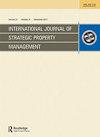探讨马来西亚商业地产市场细分中的空间限制划分方法
IF 1.7
4区 管理学
Q3 MANAGEMENT
International Journal of Strategic Property Management
Pub Date : 2023-12-21
DOI:10.3846/ijspm.2023.20498
引用次数: 0
摘要
本研究深入探讨了马来西亚吉隆坡和雪兰莪的房地产次级市场。该细分市场预期简单、均匀且密集,因此受邻近物业的影响很大。然而,忽略空间连续性的传统数据驱动方法却忽视了这一密度条件。为解决这一问题,本研究利用主成分分析法(PCA)和聚类分析法研究了空间约束数据驱动方法。研究结果表明,空间约束方法通过最小化误差和提高模型拟合度而优于传统方法。具体来说,两步聚类法和 k-means 聚类法分别减少了 6.96% 和 7.22% 的误差,但代价是模型拟合度分别降低了 11.23% 和 13.94%。相反,空间 k-means 聚类法和空间聚类分层聚类法分别减少了 8.68% 和 8.17% 的误差,同时提高了 7.1% 和 6.35% 的模型拟合度。因此,研究得出结论,与传统方法相比,空间约束数据驱动方法在区分商业地产子市场方面更为有效。本文章由计算机程序翻译,如有差异,请以英文原文为准。
EXPLORING SOME SPATIALLY CONSTRAINED DELINEATION METHODS IN SEGMENTING THE MALAYSIAN COMMERCIAL PROPERTY MARKET
This study delves into the property submarket in Kuala Lumpur and Selangor, Malaysia. The submarket is anticipated to be simple, uniform, and dense, making it highly influenced by neighbouring properties. However, traditional data-driven methods that overlook spatial contiguity disregard this density condition. To tackle this problem, the study investigates spatially constrained data-driven methods utilizing Principal Component Analysis (PCA) and cluster analysis. The findings reveal that spatially constrained methods outperform traditional methods by minimizing errors and enhancing model fit. Specifically, the two-step cluster method and k-means cluster method reduce errors by 6.96% and 7.22%, respectively, but at the cost of model fit by 11.23% and 13.94%. Conversely, the spatial k-means and spatial agglomerative hierarchical cluster methods reduce errors by 8.68% and 8.17%, respectively, while improving model fit by 7.1% and 6.35%. Hence, the study concludes that spatially constrained data-driven methods are more effective in differentiating commercial property submarkets than traditional methods.
求助全文
通过发布文献求助,成功后即可免费获取论文全文。
去求助
来源期刊
CiteScore
4.00
自引率
18.50%
发文量
23
审稿时长
15 weeks
期刊介绍:
International Journal of Strategic Property Management is a peer-reviewed, interdisciplinary journal which publishes original research papers. The journal provides a forum for discussion and debate relating to all areas of strategic property management. Topics include, but are not limited to, the following: asset management, facilities management, property policy, budgeting and financial controls, enhancing residential property value, marketing and leasing, risk management, real estate valuation and investment, innovations in residential management, housing finance, sustainability and housing development, applications, etc.

 求助内容:
求助内容: 应助结果提醒方式:
应助结果提醒方式:


